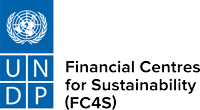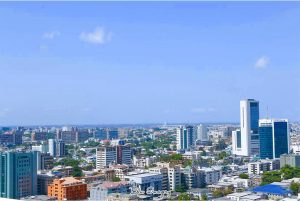New FC4S Report identifies Sustainable Finance catalysts to fund the 2030 agenda
New York, 29 April 2020 –The International Network of Financial Centres for Sustainability’s (FC4S) latest report maps out and analyses the complex array of relationships of sustainable finance partnerships while highlighting how the sustainable finance ecosystem can better work together to achieve the global development goals of the next decade. The report, which is the result of a collaboration between the United Nations Environment Programme (UNEP) Inquiry, FC4S and the United Nations Development Programme Finance Sector Hub (UNDP FSH) does so by identifying exactly how these networks function and the interplay between the different initiatives.
“To achieve the ambitious 2030 Agenda we will need trillions to finance it first. This report makes the case for sustainable finance to play a major role in fulfilling that agenda, and it does so by mapping and analysing the intricate relationships of sustainable finance partnerships, be they networks, pledges, coalitions, platforms or principles, to determine exactly how these networks function,” said Stephen Nolan, Managing Director, FC4S.
‘Nudging the Financial System: A network analysis approach’, focuses on efforts currently undertaken by individual countries, regional groups, multilateral development banks (MDBs), international organizations (IOs), private sector entities, and non-governmental organizations (NGOs). The current global sustainable finance network is composed of 115 different “partnerships,” 5,181 constituent members and more than 10,000 connections. Based on network analytics, the report shows that 75% of network participants is connected to only one partnership and only 13% of the network participants is connected to three or more other partnerships. This shows that the core of the sustainable finance agenda is mainly driven by a small number of network constituents, including financial institutions, regulators and MDBs.
“Recent events have emphasized the interdependence of our economic and financial systems with nature. They showed that the decade ahead needs to be a decade of acceleration, one that drives transformative action and where the multilateral system converges to present a united front. This is no different for the sustainable finance agenda and the financial regulators and market players driving the agenda in this space,” said Marcos Mancini, Head of International Partnerships, UNEP Inquiry.
“While the work initiated by the different partnerships mapped out in this report has certainly contributed to an acceleration in the number of green finance actions and policy and regulatory measures issued, rethinking and transforming our financial system to safeguard our commons and realize opportunities for all will require to pursue a collective action agenda within the sustainable finance ecosystem,” said Marcos Neto, Director, UNDP FSH.
An increasing number of partnerships at the international, national and market-based levels have driven the overall transition towards a sustainable financial system capable of delivering a sustainable real economy. The growth of sustainable finance partnerships at these three levels between 1990 and 2019 displays an exponential trend, with a significant acceleration in the number of initiatives established from around 2009 onwards. During the first two decades, initiatives were established at a rate of approximately 1 per year, but for the 2009-2019 period, this rate increased to 7.4 per year.
This exponential growth in sustainable finance initiatives highlights the mainstreaming of the sustainable finance agenda, but problems still remain. Many financial institutions have expressed confusion about the abundance of partnerships, which in turn could be a barrier to catalyse mass adoption.
The report also highlights that, on average, both banks and asset managers were involved in more than 10 initiatives, making them more central to the network than insurance providers and asset owners. Despite having similar means, the top 20 asset managers and banks exhibit a wide deviation in the number of initiatives they are involved with. Banks have the largest spread (between 0 and 43) indicating that, while there are a few leaders frequently involved in most of the activities in the sustainable finance space, there are also some institutions with a rather nascent sustainability agenda.
One of the major conclusions to come out of the report is that given the growth in network partnerships an effort by members of a sustainable finance network to increase and broaden the coordination of their activities can help the network develop, as well as express and sustain a more coherent structure at a higher level. This would allow for increased efficiency in system-wide outcomes and help to green the financial system and mainstream sustainable finance as one the pillars to achieving the 2030 agenda.
For more information, please contact:
Nader Rahman
Communications Manager (New York)
nader.rahman@un.org +1 (718) 517-1684









































